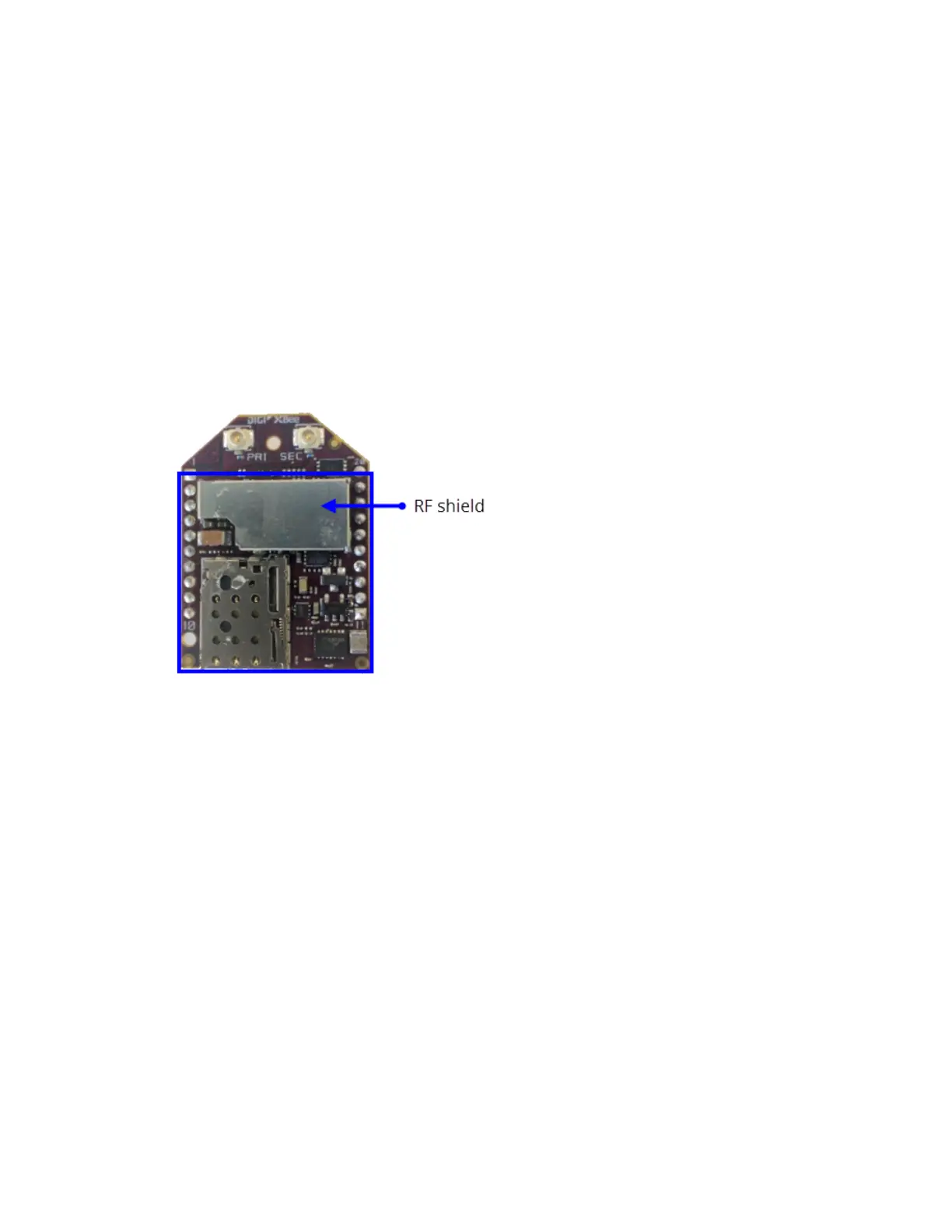Design recommendations Heat sink guidelines
Digi XBee® 3 Cellular LTE Cat 1 AT&T Smart Modem User Guide
125
Heat sink guidelines
Based on the results of your thermal testing you may find it is advisable or required to implement a
method of dissipating excess heat. This section explains how to employ a heat sink on top of the XBee
Smart Modem.
A bolt-down style heat sink on top of the XBee Smart Modem provides the best performance. An
example part number is Advanced Thermal Solutions ATS-PCBT1084/ATS-PCB1084. You must use an
electrically non-conductive thermal gasket on top of the XBee device under the area that will be
covered by the heat sink. A thermal gasket such as Gap Pad® 2500S20 is suitable for this purpose. We
recommend using a gasket with thickness of at least 0.080 in to ensure that components on top of
the XBee device do not tear through the material when pressure is applied to the heat sink.
Install the SIM card prior to placement of the heat sink. Position the thermal gasket and heat sink
assembly on the top of the device so that it covers the entire section shown inside the blue box below
(covering the RF shield with thermal gasket is optional because the RF shield is allowed to directly
contact the heat sink). Do not cover the U.FL connectors.
When attaching to the host PCB, tighten the mounting hardware until the gasket is compressed at
least 25% and the heat sink is snug against the RF shield. Avoid overtightening. To prevent shorting,
check that the surface of the heat sink does not directly contact any of the XBee device components.
You may also use an adhesive style heat sink with the XBee Smart Modem, such as Wakefield-Vette
658-45ABT3. Follow the instructions above, except do not cover the area under the RF shield with
thermal gasket; connect this surface directly to the heat sink for mechanical strength. The thermal
gasket must be used on top of all other components under the heat sink to prevent shorting and
provide effective thermal transfer to the heat sink.
The following table provides a list of typical scenarios and the maximum ambient temperature at
which the XBee Smart Modem can be safely operated under that condition. These are provided only as
guidelines as your results will vary based on application. We recommend that you perform sufficient
testing, as explained in Heat considerations and testing, to ensure that the XBee Smart Modem does
not exceed temperature specifications.
